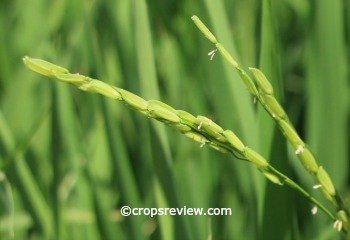This how-to guide in growing durian reviews the cultural practices from plant propagation and land preparation to harvesting.
Agriculture
What Is Cash Crop Farming?
Cash crop farming is for profit.
Also called commercial farming and cash cropping, it is a farming venture in which cash crops are grown.
Cash crops are those which are produced for the purpose of generating cash or money.
The products are therefore intended to be marketed for a profit.
Individual farmers just naturally grow cash crops as a livelihood and to generate cash for the family’s needs.
An extra profit is needed to fund the next cropping activities.
The farming methods employed differ from farmer to farmer and from country to country.
In developing countries, many traditional farmers continue to adopt their customary practices.
But in highly industrialized countries, intensive cultivation and mechanized farming are common.
This is so with large plantations operated by multinational companies and by individuals having sufficient capital.
The Arguments in Favor of Vertical Farms
Intensifying indoor urban farming through the establishment of vertical farms (or high-rise farms) in urban centers is the likely solution to the swelling human population.
The argument in favor of this technology in relation to food security is convincing, plus it has plenty more benefits too.
According to the United Nations Population Division (2009), the world population will increase from about 6.9 billion in 2010 to 9.2 billion in 2050, or an addition 2.3 billion more people to feed.
The percentage of the urban population will likewise increase from 50.46% in 2010 to 68.70% in 2050.
It is expected that the world population will continue to increase.
Currently, the rate of growth per year is about 80 million.
This is a major concern because the land area of the Earth is limited only to about 13 billion hectares.
In 2008, the total agricultural area in the world was about 4.88 billion hectares (FAOSTAT, 2010).
The Plant Stem, Functions, Parts, and Classifications
The plant stem is a component of the shoot system, the portion of the plant body of the angiosperms having a phototropic response.
Besides the stem, the plant shoot also consists of the leaves and the reproductive organs.

The stem has been described as a “central axis” to which all other parts are attached.
In most plants, the stems are conspicuous aboveground, but in some species, they are hidden below the ground.
Based on various criteria, there are other more classifications of the stem.
The first stem that develops from a seed arises from the epicotyl, an embryonic shoot within the seed.
Examples of Starchy and Leguminous Staple Crops
Staple crops are plants grown for their parts which are used as a staple food.
The staple food is one that is regularly consumed in large quantities to form the basis of a traditional diet and which serves as a major source of energy and nutrients.
Staples may be grouped into the starchy type and protein-rich type.
The starchy type consists of cereal crops, root and tuber crops, fruit crops, and palms.
The pulses belong to the protein-rich group.
Many traditional diets in developing countries consist of both starchy and legume staples to obtain a more nourishing food.
The Parts of a Seed and Their Functions in Seed and Plant Development
There are three basic parts of a seed in the angiosperms:
(a) an embryo,
(b) food storage or nutritive tissue,
and (c) seed covering.
Plant Types: I. C3 Plants, Comparison With C4 and Cam Plants
C3 plants are those which fix and reduce inorganic CO2 into organic compounds using only the C3 pathway in photosynthesis while C4 and CAM plants employ both C3 and C4 cycles.
In other words, the first classification refers to those plants having C3 photosynthesis, C4 plants employ the C4 photosynthesis, and CAM plants the CAM photosynthesis.

Plants utilizing only the C3 cycle are most common in the Plant kingdom. They comprise about 85% of all plant species (Moore et al. 2003).
In contrast, only about 3% are C4 plants while about 8% were identified as CAM plants as of 2010 (Simpson 2010).
Types of Photosynthesis: Summary Comparison of C3, C4, and Cam
There are three distinct biochemical variants or types of photosynthesis based on the mechanism that plants employ by which carbohydrate is formed from CO2: C3 photosynthesis, C4 photosynthesis, and CAM photosynthesis.
The table below shows their respective features.
The Plant Root System Distinguished From the Shoot, Its Functions
The plant root system constitutes the major part of the plant body, both in terms of function and bulk.
In terrestrial plants, the root system is the subterranean or underground part of the plant body while the shoot is the aboveground part.
Roots are branching organs that grow downward into the soil, a manifestation of geotropism.
Branching occurs irregularly and not from nodes as in stems.
In contrast, to shoot, the plant root has no leaves, nodes, internodes, and buds. With rare exceptions, roots also lack stomata.
Other morphological and anatomical features which are distinct to the root are:
(1) a hard, protective root cap at the tip of the root;
(2) absence of the pith;
(3) presence of endodermis;
and (4) the presence of a pericycle next to the endodermis.
What Are Cereal Crops and Pseudocereals, Examples
Cereal crops are interchangeably called grain crops.
In many publications and correspondence, they are simply called grains or cereals.
As of 2012, the top 5 cereals in the world ranked on the basis of production tonnage are maize (corn), rice (paddy), wheat, barley, and sorghum.
These crops are also among the top 50 agricultural commodities in the world with maize ranking second next to sugarcane.
Rice (paddy) ranks third, wheat – 4th, barley – 12th, and sorghum – 30th. Another cereal, millet, ranks no. 42 (FAOStat 2014, updated Aug. 18, 2014).
According to Chapman and Carter (1976), “a cereal is generally defined as a grass grown for its small, edible seed.”
